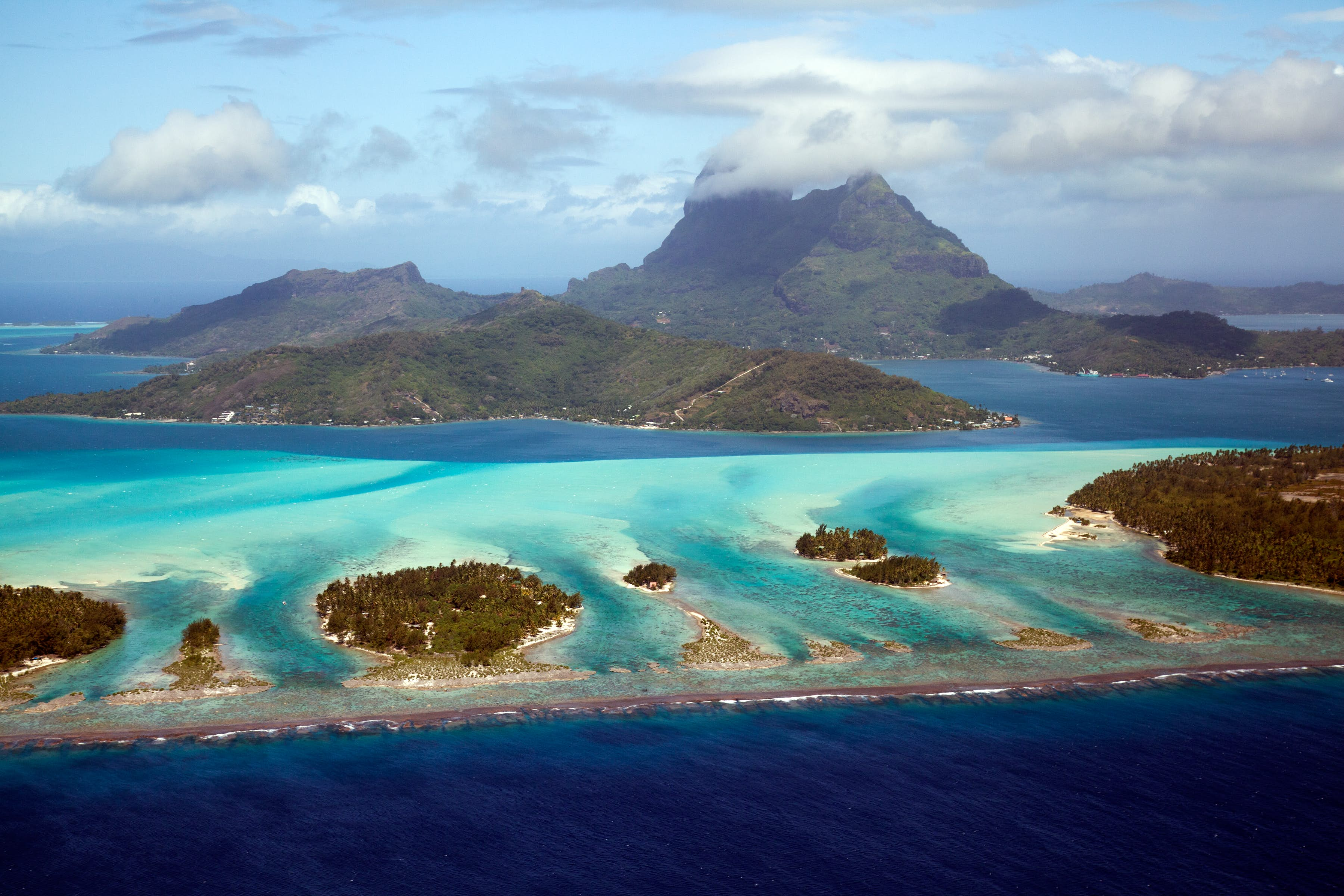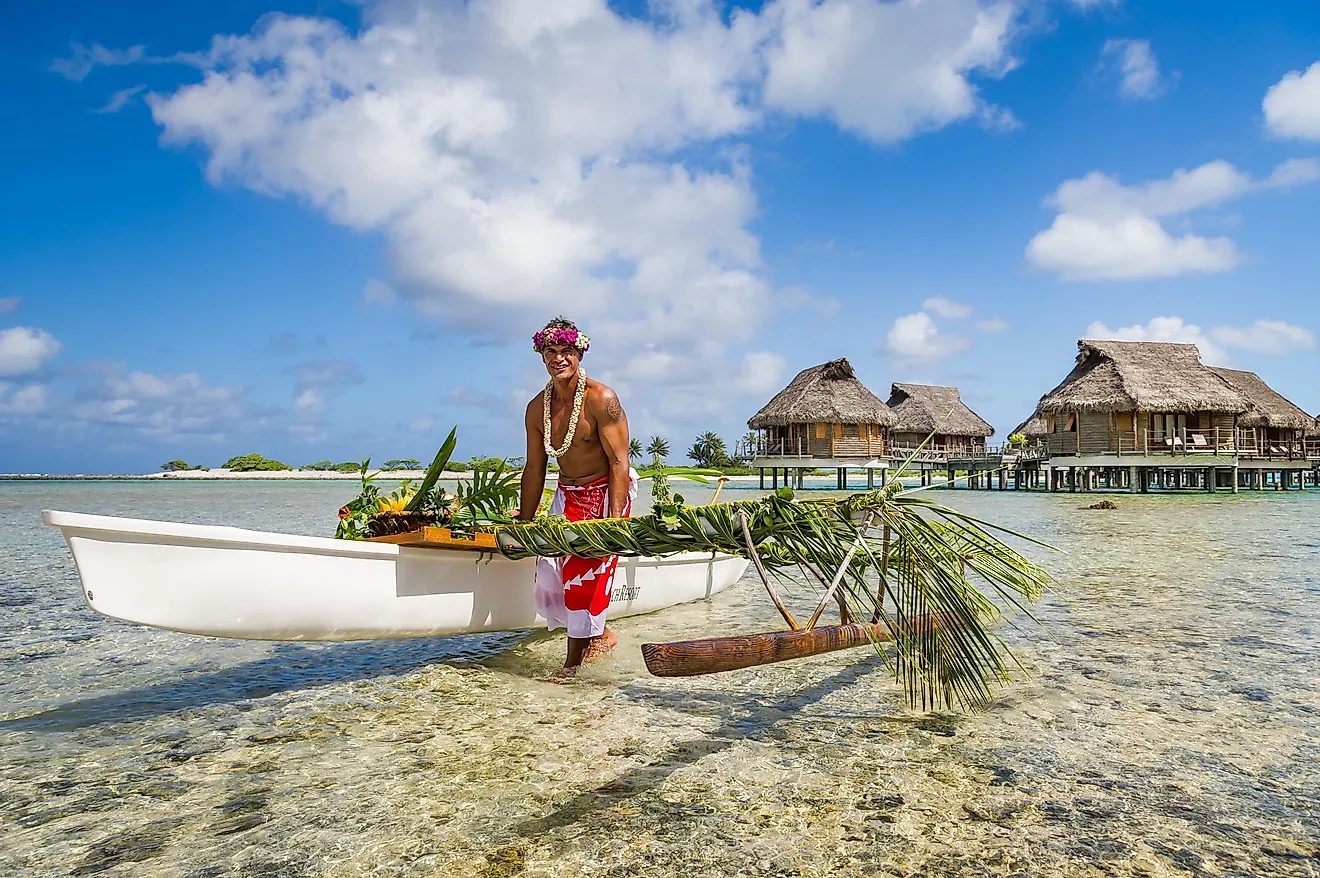Polyhome - Discovering The Enchanting Beauty Of Polynesia
Melanesia, which is primarily south of the equator, Micronesia, which is primarily north of the equator, and Polynesia, which spans a sizable area to the east, make up the three primary groups that make up the Pacific Islands. Polynesia, which meaning "many islands," is derived from the Greek words poly (many) and nesos (island). Polynesia spreads in a vast triangle from New Zealand in the southwest through Easter Island in the southeast and up to Hawai'i in the north.
Jane RestureSep 22, 20236868 Shares118406 Views

Melanesia, which is primarily south of the equator, Micronesia, which is primarily north of the equator, and Polynesia, which spans a sizable area to the east, make up the three primary groups that make up the Pacific Islands.
Polynesia, which meaning "many islands," is derived from the Greek words poly (many) and nesos (island). Polynesia spreads in a vast triangle from New Zealand in the southwest through Easter Island in the southeast and up to Hawai'i in the north.
Polynesians have lighter complexion and are often taller than Melanesians and Micronesians. Polynesians are thought to have originated in Southeast Asia before migrating via Fiji to Tongaand Samoa, and then to the rest of Polynesia.
It has been said that Samoa is the heart of Polynesia, and that Polynesia is also the heart of Oceania. People who are diverse in their culture and customs, spread throughout a huge span of the great Pacific Ocean, yet connected together by a fundamental culture that has remained intact since our oral traditions can recollect.
The Pacific Islands
The beauty and romance of the Pacific Islands have always captured man's imagination. They glisten like an oasis, raised above the sea in amazing and breathtaking grandeur. These gorgeous tropical islands also offer a retreat - a haven of sanctuary, peace, and excitement - for those of us in need of isolation and adventure.
The islands' greenness and freshness conjure up visions of eternal youth and a heavenly paradise - crystal sea, sparkling white sand and surf, golden yellow rays of sunshine - a dawn to night sky of superb colors - from sapphire-blue to topaz and turquoise, garnet and ruby to amethyst, citrine and peridot to the unique mystique of a theatrical curtain of exquisite Tahitian black pearl and onyx Oceania is the most gorgeous, enchanting, and stunning of these fantastic dream-worlds, with its chains of pure and natural multicolored gem-clustered islands.
Oceania
Oceania is commonly used to refer to all of the islands in the Central and South Pacific, including Australia (continent), New Zealand, and, on occasion, the Malay Archipelago. The Pacific Islands of Melanesia (including Papua - previously Irian Jaya), Micronesia, and Polynesia (including the Polynesian nation of Hawai'i), as well as Australia and New Zealand, are the primary emphasis of this website.
Oceania Origins
According to current scholarship, human colonization of Oceania - the wide reaches of the Pacific that include Polynesia, Melanesia, and Micronesia - began on New Guinea (Papua and Papua New Guinea).
The earliest settlers carried a language that was primarily African with them. They subsequently made their way across the Melanesian Archipelago, from Papua and Papua New Guinea to the Solomon Islands, Vanuatu, New Caledonia, and finally Fiji. During this time, the language changed and fragmented, eventually becoming the Melanesia languages we know today.
Other recent research, including DNA analysis of almost 700 Aboriginal Australian and Melanesian samples, have validated the assumption that Aboriginal Australians are derived from the same small group of individuals who departed Africa around 70,000 years ago. The settlers evolved in relative isolation after landing in Australia and New Guinea around 50,000 years ago, gaining distinct genetic features and technologies.
The exodus of the progenitors of today's Polynesians out of Asia thousands of years later took with it languages and dialects that were fundamentally Asian in origin and developed into the current Polynesian languages.
Until recently, archaeologists assumed that Polynesians originated in Taiwan. Interestingly, new DNA research in Taiwan have yielded some intriguing conclusions about the Polynesian and Melanesian people's origins.
Certainly, linguistic investigations have revealed that the Polynesians, unquestionably the finest mariners in history, originated in Taiwan. Only 400,000 of Taiwan's 23 million people are descended from the original inhabitants. These people originally spoke an Austronesian language, which is unrelated to Chinese but contains Polynesian dialects.
The original group's DNA research revealed three mutations shared by Taiwanese, Polynesians, and Melanesians, all of whom spoke Austronesian. These mutations are not present in other Asians, implying that Polynesians and Melanesians are descended from the original inhabitants of Taiwan. Indeed, genetic investigations have now shown that the progenitors of the great canoe sailors began their journey further up the path in eastern Indonesia.
These seafarers traveled in small groups eastward along the top of the Melanesian archipelago until they arrived in Fiji. Some went on to uninhabited Tonga and Samoa after using Fiji as a staging station.
These Polynesian forefathers must have been isolated for a while in a home group of islands in order to create the physical kinds, language, and culture that all Polynesians share. A series of archaeological finds led us to conclude that this isolation began around 3,000 years ago on the islands of Tonga and Samoa.
Archaeologists discovered a type of prehistoric painted pottery at numerous Melanesian sites beginning in 1909 in New Britain. Samples were also collected in Fiji, Melanesia's easternmost extension, in 1947.
The identical pottery was discovered five years later in Lapita, New Caledonia. These artifacts, now known as Lapita-style pottery, clearly trace the visits and attempted colonies of a marine people traveling along a Melanesian path into Polynesia.
Lapita pottery was discovered in Tonga in 1963, and more recently in Samoa, both in western Polynesia. Tonga is Polynesia's longest inhabited island group, with radiocarbon dates dating back to 1140 B.C.
As a result, we believe that the first authentic Polynesians were the people who manufactured Lapita ceramics in Tonga. Language ties suggest that this movement proceeded eastward through Samoa to the Marquesas, where the oldest sites in Eastern Polynesia have been discovered.
Far to the southeast of the Marquesas is proof of a truly extraordinary feat: a voyage to Easter Island (Rapa Nui), some 2,400 miles away, despite strong winds and currents. Easter Island, Polynesia's easternmost outpost, is not only the Pacific's most remote inhabited island, but it is also barely 15 miles long.
When we consider the likelihood of Easter Island being discovered by early Polynesians, we can only infer that their sailing canoes were already capable of traveling the Pacific, and that on one such expedition, Easter Island was fortuitously observed. Radiocarbon dating in 1955-56 reveals that it was discovered and settled as early as A.D. 400.
When viewed in conjunction with the archaeology and languages of the Society and Marquesas Islands, the sites on Easter Island reveal clear evidence that the pre-historic culture of Easter Island could have originated from a single landing of Polynesians from a Marquesan Island.
These Polynesians would have had everything they needed to conquer an uninhabited volcanic island. Their success in turning this windswept sixty-four square mile area, devoid of edible native plants, not only habitable but also the site of outstanding cultural achievements, attests to the Polynesian invaders' ingenuity.
According to an examination of excavated adzes, fishhooks, jewelry, and other artifacts, Tahitiand the other Society Islands must have been colonized soon after the Marquesas. According to current evidence, Hawaii and New Zealand were colonized after the year 500.
Radiocarbon dating techniques allow us to assign approximate dates to this entire Pacific migration: entry into West Polynesia around 1000 B.C., arrival in East Polynesia around the time of Christ, and completion by A.D. 1000.
The early Polynesians have the skills to return to the Pacific's most remote outpost. One-way excursions are unlikely to account for the early presence in the Hawaiian Islands, for example, of twenty or so cultivated plants from Tahiti and the Marquesas.
As a result, we believe that the early Hawaiians navigated the longest sea path in Polynesia, returning to Tahiti and then to Hawaii, known as the "Child of Tahiti."
Polynesians in the Pacific are mainly found in a region known as the Polynesian Triangle. Hawaii is in the north, New Zealand is in the south, and Easter Island is in the east of the Polynesian Triangle. The lines drawn from Hawaii to New Zealand bend westward, traveling via Fiji and Tonga and including the Ellice Islands (Tuvalu).
The north-south line creates the base, with its pinnacle 4000 miles to the east following the path of the rising sun. The Marquesas are almost in the center of the eastern line, which runs from Easter in the south to Hawaii in the north, and is surrounded by Samoa, Tonga, Tahiti, and the Cook Islands. The Maori people live in New Zealand, the most southern collection of Polynesian islands.
Micronesia's tiny islands, fascinating people, and old architecture are almost buried in the expanse of the Pacific Ocean. The Micronesia archipelago spans approximately 2000 miles yet has a land size of only 271 square miles.
The earliest inhabitants of Micronesia are thought to have arrived from the Philippines and Indonesia around 1500 years before Christ. The islands of Micronesia (and Polynesia) constitute the world's last major region to be populated by humans. Austronesian-speaking agriculturists invaded both of these groups of islands within the last 5,000 years.
Linguistic studies have previously been an important influence in determining the origins of both the Micronesian and Polynesian peoples, who are mostly of medium size with straight hair and brown skin.
Micronesia means 'little islands' and is derived from the Greek words mikros (small) and nesos (island). This is an apt description of the nearly 2,000 tropical islands strewn across the Pacific Ocean between Hawaii and the Philippines.
Despite the fact that they are separated by a large distance, each has its own culture, history, customs, rituals, myths and legends, lifestyle, and geographical personality. The Federated States of Micronesia (Pohnpei, Kosrae, Chuuk, and Yap), Guam, Palau, Saipan, the Republic of the Marshall Islands, and the Republic of Kiribati are among the islands of Micronesia.
In a 1994 DNA study in Micronesia, head hair was used to collect DNA samples. The study aimed to examine the genetic links of distinct Micronesian populations to those of other Pacific Islanders and Asians, as well as their languages.
The researchers looked at DNA contained within mitochondria (mtDNA), which are microscopic cellular structures that serve as our cells' energy manufacturers and storage facilities. Mitochondria are inherited from the mother's fertilized egg and passed on maternally to the following generation. As a result, this approach disregards fatherly inheritance.
In general, this study discovered that the bulk of mtDNA sequences from Micronesian and Polynesian people are Asian, with others originating in New Guinea. The findings supported the idea of an island Southeast Asian origin and a colonization path along New Guinea's north coast.
The Marianas and the major island of Yap appear to have been colonized independently from Southeast Asia, and both have since received migrants from Central-Eastern Micronesia. Palau clearly exhibits a complicated prehistory that included a considerable migration of New Guinean lineages.
Furthermore, Chamorro mtDNA is unique from that of other Micronesians and Polynesians. This shows that the Marianas were settled differently than the rest of Micronesia.
Conclusion
Thus, genetic similarities between Micronesian and Polynesian populations result from a common origin in some situations and considerable gene flow in others. In addition to demonstrating that Micronesians and Polynesians share a southeast Asian ancestry, research based on DNA provided by both males and females to their offspring often reveal that Polynesians and Micronesians have a higher degree of Melanesian ancestry.
Latest Articles
Popular Articles


